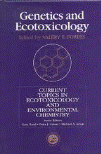Papers in the Biological Sciences

Valery Forbes Publications
Document Type
Article
Date of this Version
1999
Abstract
A Life-Table-Response Experiment lasting 78 d was performed to investigate the toxic effects of sediment-associated 4-n-nonylphenol (NP) on growth, reproduction, and survivorship of isolated hermaphrodites of the infaunal polychaete Capitella sp. I. Demographic effects were evaluated using both a fully age-classified and a simple twostage model to estimate population growth rates (λ). Decomposition analysis was performed to explore the contributions of each of the affected life-history traits to the effects observed on l. Elasticity analysis was applied to examine the relative sensitivity of λ to changes in each of the different life-history traits under different exposure levels.
In the lowest NP treatment (14 μg NP/g dry mass of sediment) significant stimulatory effects were observed for both asymptotic body volume and average brood size, but these did not result in a significant effect on λ. Negative effects on brood size, volume-specific fecundity, time to first reproduction, and individual growth rate were significant in the highest NP treatment (174 μg/g dry mass), and these effects resulted in a significant reduction in λ. Decomposition of the two-stage model indicated that the effect of NP on time to first reproduction was a major cause of changes in population growth rate. Although time to first reproduction increased by only ~20% in the highest NP treatment relative to the control, it was responsible for more than half (55%) of the effect on λ. In contrast, perindividual fecundity decreased by 75% but only explained 44% of the effect on λ. Elasticity analysis of the two-stage model showed that l became less sensitive to changes in fecundity and time to maturity, but not to changes in juvenile and adult survival probabilities, with increasing NP exposure.
In this study, population growth rate was not significantly affected by NP concentrations lower than those affecting the individual life-history traits. However, since the populationlevel consequences of changes in each trait depend on the starting value of λ, on the extent to which the other traits are impacted by the toxicant, and on the life-history characteristics of the species under consideration, the application of demographic analyses to chronic toxicity test results is required to link individual-level responses to population-level impacts of toxicant exposure.


Comments
Published in Ecological Applications, 9(2), 1999, pp. 482–495. Copyright 1999 by the Ecological Society of America. Used by permission.